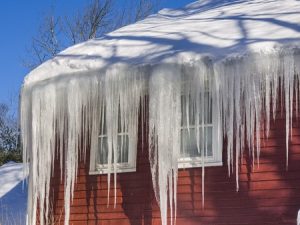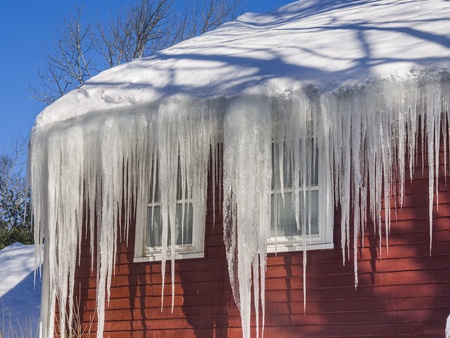 The vents in your attic are designed to facilitate airflow and maintain a stable internal temperature in your home. Because most of us don’t spend much time in our attics, however, it can be easy to overlook inadequate ventilation. A poorly-ventilated attic can make your roof more prone to ice dam buildup in the winter, and lock in heat in the winter. Overtime, this can cost you a bundle in utility costs. The good news is that it’s relatively easy to determine whether or not your attic needs additional ventilation.
The vents in your attic are designed to facilitate airflow and maintain a stable internal temperature in your home. Because most of us don’t spend much time in our attics, however, it can be easy to overlook inadequate ventilation. A poorly-ventilated attic can make your roof more prone to ice dam buildup in the winter, and lock in heat in the winter. Overtime, this can cost you a bundle in utility costs. The good news is that it’s relatively easy to determine whether or not your attic needs additional ventilation.
Let’s Start by Monitoring the Temperature
Keep a thermometer in your attic over the course of a few consecutive hot days. A properly-ventilated attic should maintain a relatively stable temperature, even when it’s especially hot outside. Attics that aren’t properly ventilated, on the other hand, can reach temperature upwards of 140 degrees Fahrenheit. Generally speaking, your attic shouldn’t be more than about 20 degrees warmer than the ambient temperature outside on a hot day.
Next, Check for Moisture
Poorly-ventilated attics retain moisture as well as heat. Keep an eye out for condensation and mildew growth on rafters. Check the insulation in the attic for signs of deterioration as well – this is typically caused by moisture intrusions.
Evaluate the Net Free Vent Area
An attic’s net free vent area (NFA) is the ratio between the square footage of the vent space and the total square footage of the attic. Most building codes require that buildings have 1 square foot of vent space for every 150 square feet of attic space. All the vents in your attic should be marked with an NFA rating. To calculate your attic’s NFA rating, simply add the NFA rating of each vent, and divide the total by the square footage of your attic. If the ratio is less than 1:150, your attic is in need of additional ventilation.

